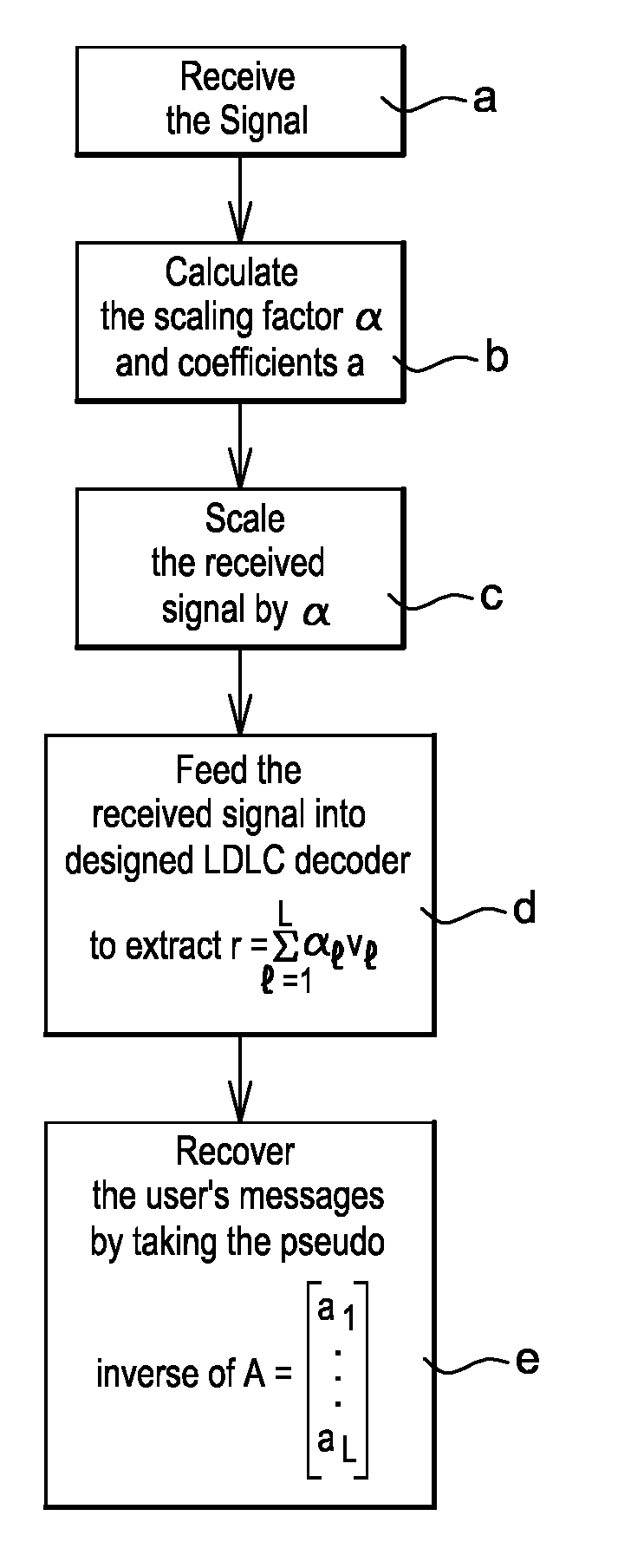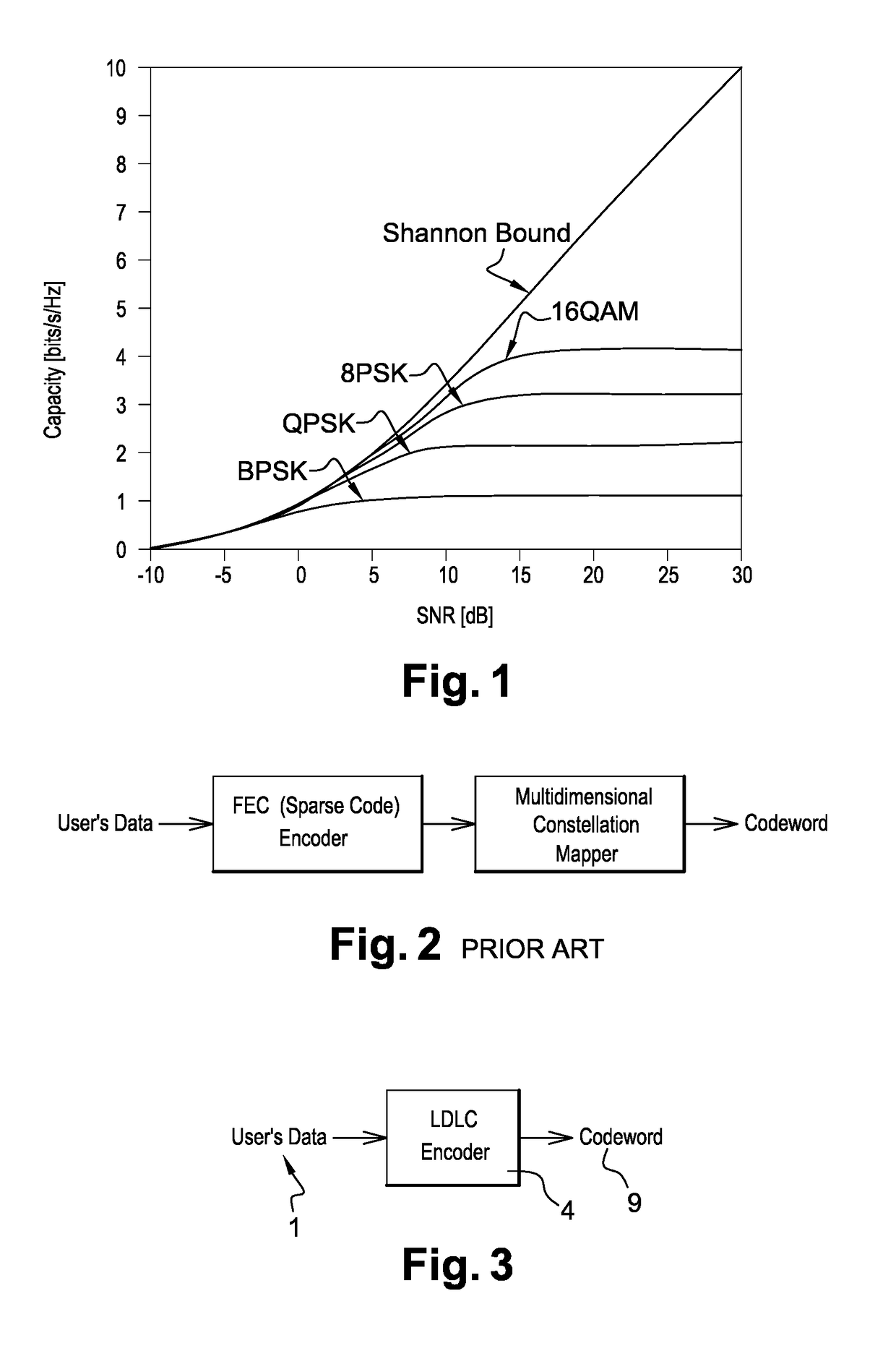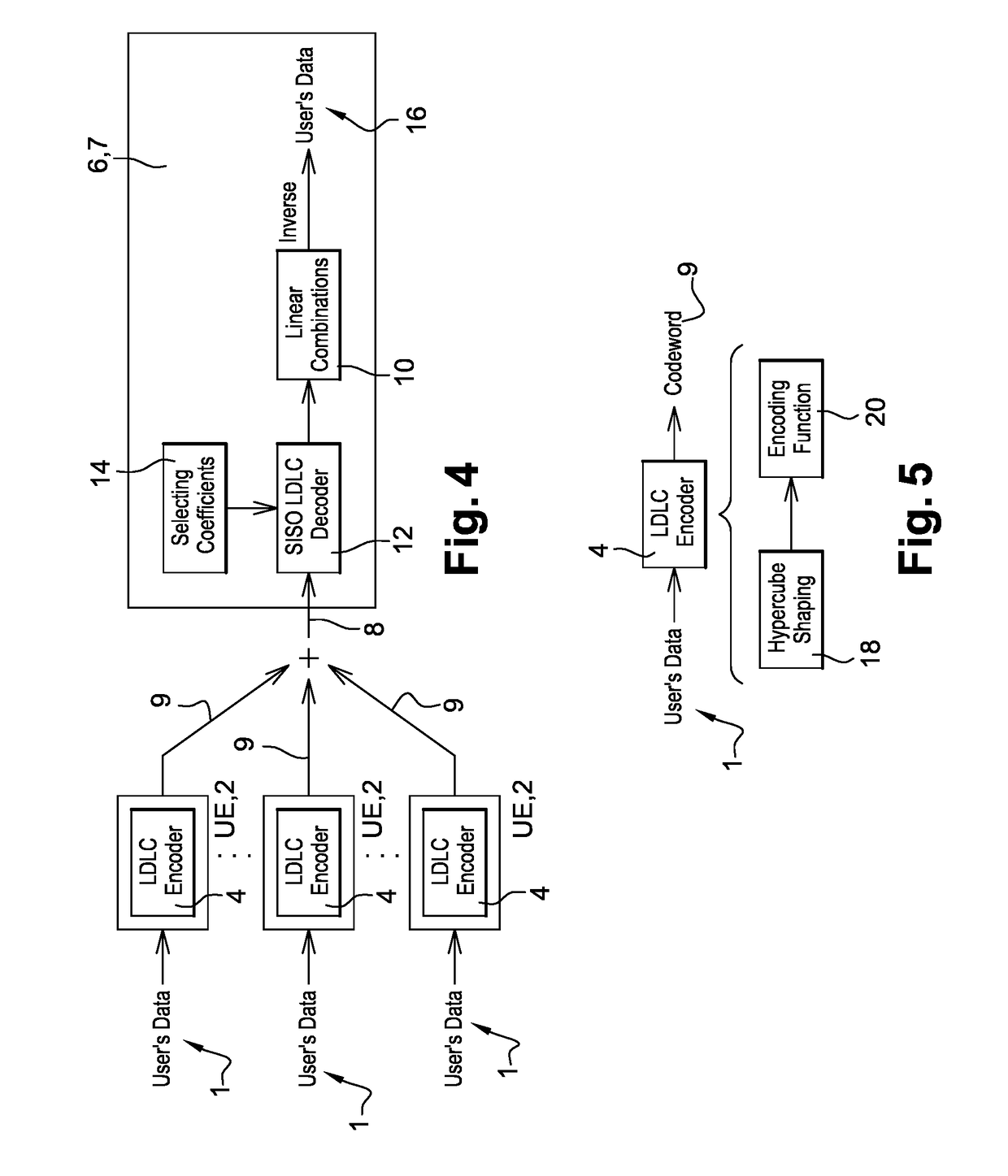A receiver, a plurality of transmitters, a method of receiving user data from multiple transmitters, and a method of transmitting user data
a receiver and user data technology, applied in the field of wireless telecommunications, can solve the problems of linear decoding complexity and linear decoding complexity of embodiments, and achieve the effects of reducing hardware requirements, superior shaping gain, and saving battery energy of the hands
- Summary
- Abstract
- Description
- Claims
- Application Information
AI Technical Summary
Benefits of technology
Problems solved by technology
Method used
Image
Examples
example
[0103]Here is a simple example to illustrate the decoding procedure of LDLMA: there are 2 user terminals with access to the base stations. Both user terminals employ the same LDLC codebook Λ, where the codewords are x1=Gv1 and x2=Gv2, respectively. Assume that the channel coefficient vector is h=[h1 h2]T=[1 2.2]T such that the received signal is y=1x1+2.2x2+z. Assuming after the rate optimization, the base station selects, say, α1=5 and α2=4 as the best two scale factors such that we have
5y=5x1+11x2t1+5z,and4y=4x1+8.8x2+4z=4x1+9x2t2+(-0.2x2+4z)zeff,2.
[0104]where
A=[51149]
as t1,t2 ∈Λ, the SISO lattice decoder over A iteratively estimates the distributions fT1|Y, (t1|y) and fT2|Y, (t2|y) to extract r1=5v1+11v2 and r2=4v1+9v2 because of the following equalities: 5x1+11x2=G (5v1+11v2) and 4x1+9x2=G(4v1+9v2). Once we have r1, r2 and A, we obtain the users' data v1 and v2 by taking the inverse of A over r1 and r2.
[0105]The present invention may be embodied in other specific forms without d...
PUM
 Login to View More
Login to View More Abstract
Description
Claims
Application Information
 Login to View More
Login to View More - R&D
- Intellectual Property
- Life Sciences
- Materials
- Tech Scout
- Unparalleled Data Quality
- Higher Quality Content
- 60% Fewer Hallucinations
Browse by: Latest US Patents, China's latest patents, Technical Efficacy Thesaurus, Application Domain, Technology Topic, Popular Technical Reports.
© 2025 PatSnap. All rights reserved.Legal|Privacy policy|Modern Slavery Act Transparency Statement|Sitemap|About US| Contact US: help@patsnap.com



